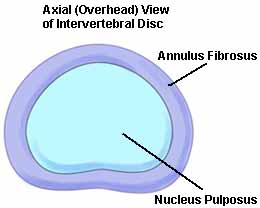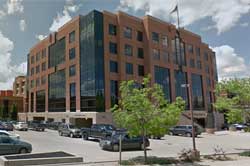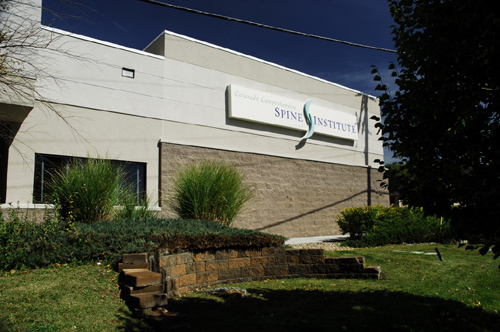Locations

Fax: (303) 762-9292

Understanding Spinal Anatomy: Intervertebral Discs
Between each vertebral body is a cushion called an intervertebral disc. Each disc absorbs the stress and shock the body incurs during movement and prevents the vertebrae from grinding against one another. The intervertebral discs are the largest structures in the body without a vascular supply. By means of osmosis, each disc absorbs needed nutrients.

Each disc is made up of two parts: the annulus fibrosus and the nucleus pulposus.

Annulus Fibrosis
The annulus is a sturdy tire-like structure that encases a gel-like center, the nucleus pulposus. The annulus enhances the spine’s rotational stability and helps to resist compressive stress.
The annulus is a layered structure consisting of water and sturdy elastic collagen fibers. The fibers are oriented at different angles horizontally similar to the construction of a radial tire. Collagen consists of fibrous bundles made of protein bound together by proteoglycan gel.
The intervertebral discs are the largest structures in the body without a vascular supply. Through osmosis, each disc absorbs needed nutrients.
Nucleus Pulposus
The center portion of each intervertebral disc is a filled with a gel-like elastic substance. Together with the annulus fibrosis, the nucleus pulposus transmits stress and weight from vertebra to vertebra.
The structural components of the nucleus pulposus is similar to the annulus fibrosus; water, collagen and proteoglycans. The difference is the concentration of these substances. The nucleus contains more water than the annulus.
Endplates
The top (superior) and bottom (inferior) of each vertebral body is coated with an endplate. Endplates are complex structures that blend into the intervertebral disc and help hold the disc in place.








